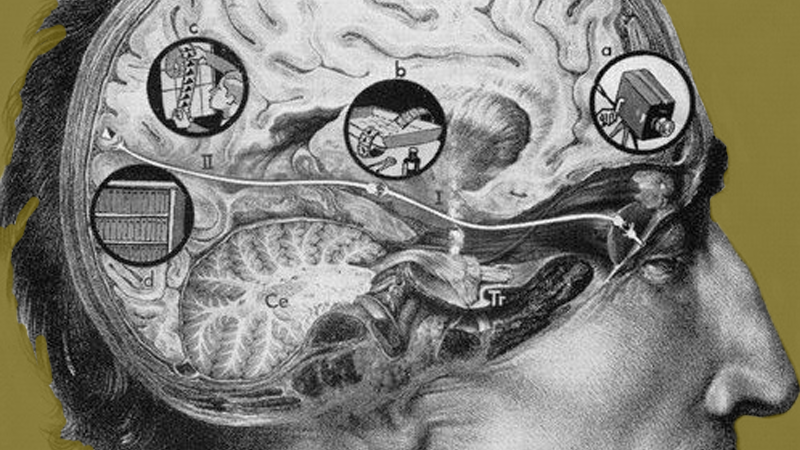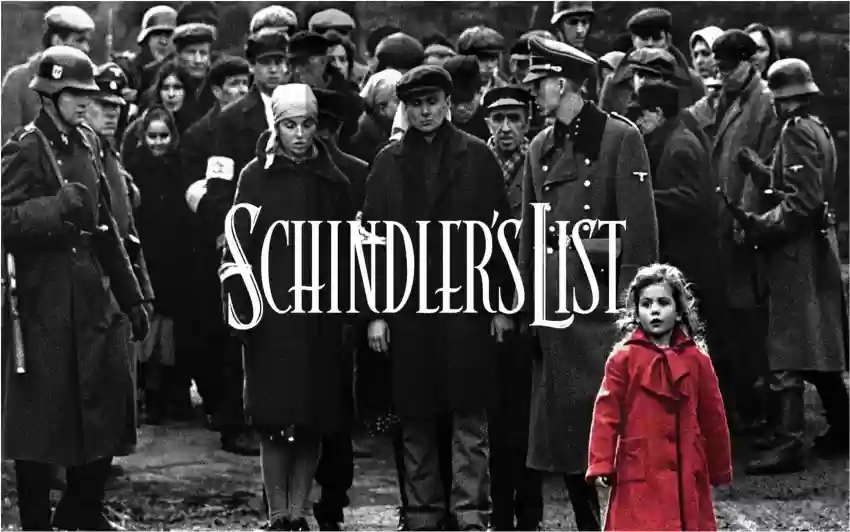"Prosthetic Memory and Historical Trauma: Exploring Collective Narratives in Schindler's List, Hotel Rwanda, and 12 Years a Slave"
Abstract
Alison Landsberg’s theory of "prosthetic memory" is interesting to study in the context of historical trauma as depicted in films like “Schindler's List” (1993), “12 Years a Slave”(2013) and “Hotel Rwanda”(2004). Prosthetic memory refers to memories that are not directly experienced but are acquired through media or storytelling, often in the form of movies or books. These films, which portray events such as the Holocaust, and the Rwandan Genocide, allow viewers to "experience" the horrors of these tragedies. This study looks at how prosthetic memory shapes our understanding of historical trauma, collective memory, and empathy, even for events that we did not live through. Through visual storytelling, these films help preserve and communicate the legacies of these atrocities, fostering a shared memory that transcends individual experience.
What is Prosthetic Memory?
Prosthetic memory refers to memories that are not personally lived or experienced but acquired through mediated representations such as films, television, and other forms of mass media. The term was coined by Alison Landsberg, the concept emphasizes how individuals can adopt memories of historical events, especially those tied to trauma, through technologies of mass culture. These memories, though artificial or mediated, feel real and deeply affect an individual's emotional and intellectual understanding of past events.
The media, especially cinema, plays a pivotal role in creating these prosthetic memories. By offering visual narratives and emotional engagement with historical events, cinema allows viewers to experience events they haven't personally encountered. This interaction enables a kind of "intimate" relationship with history, and the viewer adopts these memories, integrating them into their own archive of experiences. Such cinematic representations of historical trauma, such as films on the Holocaust or Tutsi genocide, exemplify how individuals can come to "remember" these collective traumas even without personal involvement.
Building Cultural Memory Through Mass Media
The creation of prosthetic memories by means of media significantly impacts cultural memory, shaping how societies understand and process historical events. Cinema, through its narrative power and emotional appeal, makes it possible for people from different ethnic, social, and cultural backgrounds to share memories of events they did not experience firsthand. Movies like Schindler’s List, and Hotel Rwanda, not only provide factual depictions but also emotional engagement, making viewers empathize with the victims of these events.
These memories foster a collective understanding of historical traumas, transcending personal or familial experiences. Prosthetic memory, therefore, works as a tool for building a sense of solidarity across different groups by allowing individuals to participate in a shared history and engage with collective traumas, even when they are not direct witnesses. In the age of mass media, these memories contribute to the formation of public and cultural memory, reshaping how societies remember and relate to their pasts
Schindler's List and the Holocaust
In her article “Memory, Empathy and the Politics of Identification,” Landsberg argues that various types of media are able to produce prosthetic memories, but film is the most proficient medium for creating them. The 1993 movie “Schindler’s List” by Stevan Spielberg is symbolic of creating the prosthetic through its depiction of Jews massacred by Fascist government of Nazi party. It focuses on the exceptional case of Oskar Schindler, a Nazi who saved 1,200 Jews, instead of the broader tragedy of six million victims. Steven Spielberg’s film plays a crucial role in creating prosthetic memories for its viewers and brough the holocaust event into mainstream consciousness.
The film uses cinematic techniques like close-ups and point-of-view shots, which allows viewers to emotionally engage with the characters and historical events. These techniques help create a sense of intimacy between the audience and the characters, fostering empathy and encouraging viewers to imagine themselves in the characters’ situations. This aligns with Landsberg's concept that prosthetic memory forms when viewers engage emotionally and cognitively with historical narratives through media.
Moral Development of Oskar Schindler
The central character, Oskar Schindler, undergoes a moral transformation from a self-interested and hedonistic businessman to a savior of Jews during the Holocaust. His narrative arc allows viewers to experience, through cinema, the horrors of the Holocaust and the redemptive power of individual action. Schindler’s realization of the Nazi atrocities is mirrored in the audience’s growing awareness, making his emotional journey a conduit for the creation of prosthetic memories in viewers.
The film's portrayal of the Holocaust allows viewers to "remember" the suffering of Jewish victims and the moral actions of those who resisted Nazi crimes, thus becoming part of the global collective memory of the Holocaust.
Creating Empathy Through Historical Trauma
This movie does more than recount historical facts. It constructs an immersive emotional experience that allows viewers to engage with the Holocaust as a lived memory. The intense scenes of suffering, survival, and moral choices made under extreme duress contribute to a prosthetic memory that integrates historical knowledge with emotional and ethical reflection.
Hotel Rwanda and Rwandan Genocide
Hotel Rwanda, directed by British filmmaker Terry George, is a feature film that portrays the real life story of Paul Rusesabagina, the manager of Kigali's Hotel des Mille Collines, who saved 1,268 people during the 1994 Rwandan Genocide. Rusesabagina protected these individuals from the genocidaires by offering them accommodation in the hotel and bribing the killers with money, alcohol, and cigars.
In Alison Landsberg's view, prosthetic memory allows people to emotionally connect with experiences they haven't lived, like seeing through someone else's eyes. This can encourage empathy and even motivate social change by bridging cultural and national divides. For example, ‘Roots’ helped white Americans better understand the black experience of slavery.
However, Landsberg notes that people are always aware that these memories aren’t their own, similar to how one knows a prosthetic limb isn't natural. Despite this, such memories can still have a strong emotional impact, though they are shaped by filmmakers, writers, and other creators.
Landsberg illustrates this idea with ‘The Thieving Hand’, a film where a beggar receives a prosthetic arm that continues to steal, showing how memory or behavior can "attach" to someone. This raises questions about the authenticity of such memories.
False Prosthetic Memory
While prosthetic memory has the potential to promote empathy and justice, it also has risks. For example, “Hotel Rwanda” has been criticized by genocide survivors for misrepresenting their experiences, leading to inaccurate memories. Additionally, there’s concern that prosthetic memory can reinforce the "white savior complex," where privileged viewers feel superior rather than truly empathetic.
Landsberg’s work encourages us to think about how media shapes our understanding of history and whether prosthetic memory can genuinely foster empathy or merely serve to make privileged viewers feel good about themselves.
12 Years a Slave and Prosthetic Memory
Directed by Steve McQueen, 12 Years a Slave (2013) movie is based on the memoir of Solomon Northup, offers a harrowing depiction of American slavery through the story of a free Black man who is kidnapped and sold into bondage. As a narrative that both reveals and critiques the system of slavery, it serves as a powerful example of prosthetic memory. A concept whereby media, especially movies, constructs and transmits collective memories of past historical traumas.
In 12 Years a Slave, the viewers are offered access to the pain, suffering, and injustice of slavery through the lived experience of Solomon Northup, a freeman who is torn from his family and subjected to the brutalities of the plantation system.
The film serves as a prosthetic memory because it presents a narrative arc that is both individual (Solomon’s personal trauma) and collective (the shared suffering of enslaved people of African region). The viewers are immersed in the specifics of Solomon’s experience, the emotional and physical torment, the degradation of his humanity, and the psychological toll of enslavement. McQueen's emphasis on a realistic and raw portrayal of these horrors, without romanticizing or sanitizing the past, allows the audience to confront the brutal truths of American slavery.
The memory presented in the film is not just Solomon’s but also one that collectively reconstructs a memory of the horrors faced by millions of enslaved African Americans. This prosthetic memory operates not only as a vehicle for historical awareness but also as a means of cultural reckoning, giving viewers a chance to reckon with the pain and trauma that slavery inflicted on Black Americans.
Conclusion
To conclude, movies like “Schindler's List”, “Hotel Rwanda”, and “12 Years a Slave” demonstrate how film can serve as a powerful medium for prosthetic memory, enabling audiences to engage with historical trauma and collective narratives that they have not directly experienced. These films reconstruct memories of horrific events such as the Holocaust, the Rwandan Genocide, and American slavery, shaping public consciousness by providing intimate, emotional access to these painful histories. Through their compelling storytelling, they challenge sanitized or forgotten versions of history, offering a means to remember, reflect, and reckon with the past, while also emphasizing the ongoing impact of these traumas on contemporary society.
Wordcount: 1510
Images Used: 4
References
Dargis, Manohla. “‘12 Years a Slave’ Holds Nothing Back in Show of Suffering.” The New York Times, 17 October 2013, https://www.nytimes.com/2013/10/18/movies/12-years-a-slave-holds-nothing-back-in-show-of-suffering.html. Accessed 16 November 2024.
Gottlieb, Akiva. “Commentary: Why 'Schindler's List' remains brilliant and troubling 25 years after its release.” Los Angeles Times, 5 December 2018, https://www.latimes.com/entertainment/movies/la-et-mn-schindlers-list-25-20181205-story.html. Accessed 11 November 2024.
Hitchcott, Nicki. “Seeing the Genocide against the Tutsi through someone else’s eyes: Prosthetic memory and Hotel Rwanda.” Sage Journals, vol. 14, no. 5, pp. 1-14, https://journals.sagepub.com/doi/10.1177/1750698020959811. Accessed 11 November 2024.
Landsberg, Alison. “Prosthetic Memory: The Ethics and Politics of Memory in an Age of Mass Culture.” Memory and Popular Film, edited by Paul Grainge, Manchester University Press, 2003, pp. 144–61. JSTOR, http://www.jstor.org/stable/j.ctt155jfm0.12. Accessed 11 Nov. 2024.
Szczypa, Piotr. “New Article: 3Heroes and the Monstrous Event of the Holocaust in Schindler’s List and Korczak.” The Polish Review, vol. 60, no. 1, 2015, pp. 23–38. JSTOR, https://doi.org/10.5406/polishreview.60.1.0023. Accessed 11 Nov. 2024.







